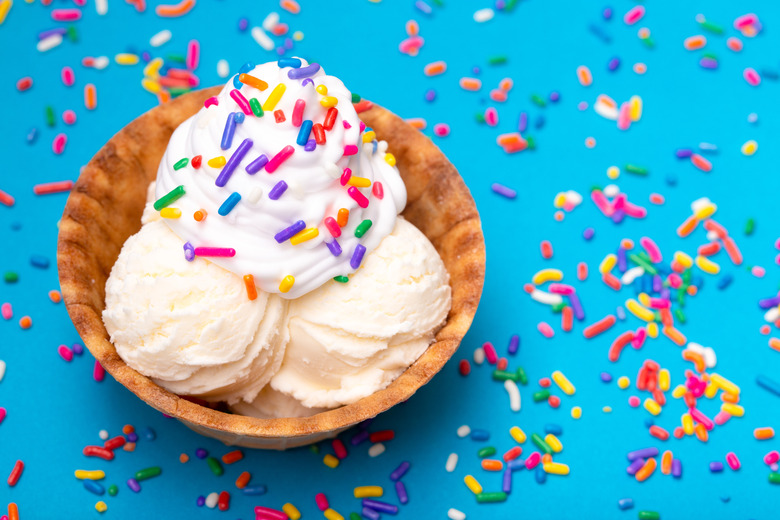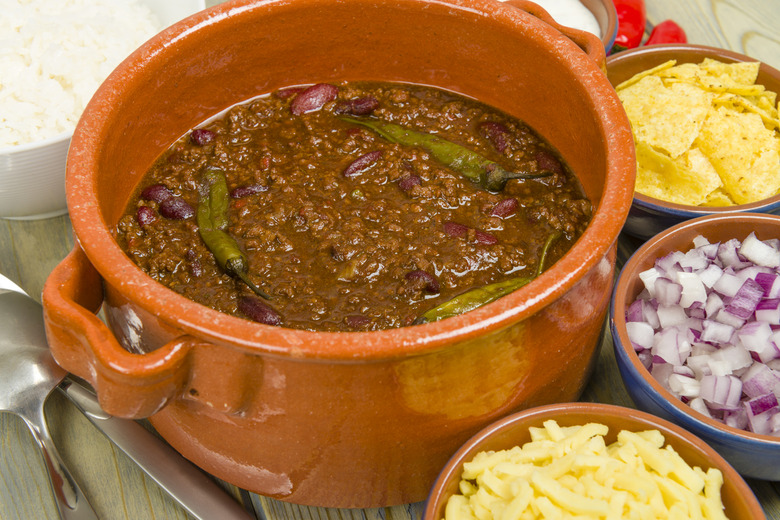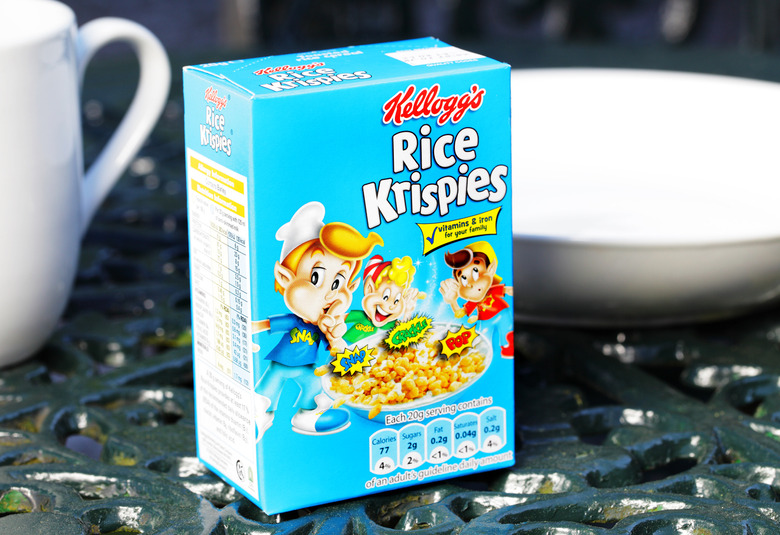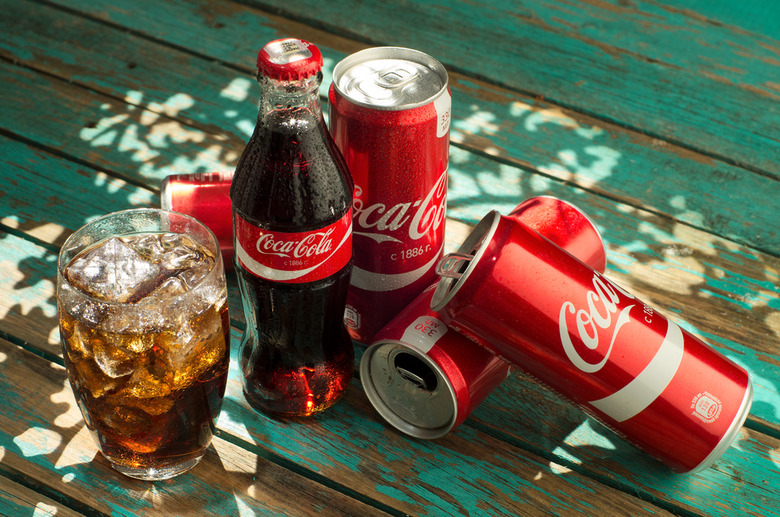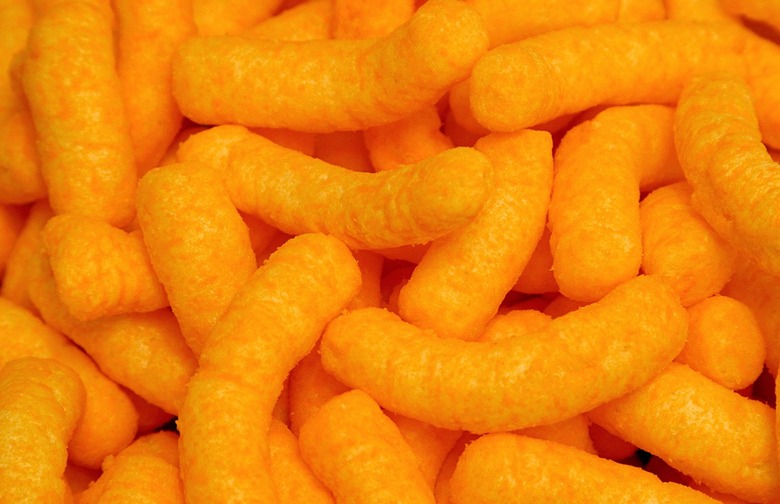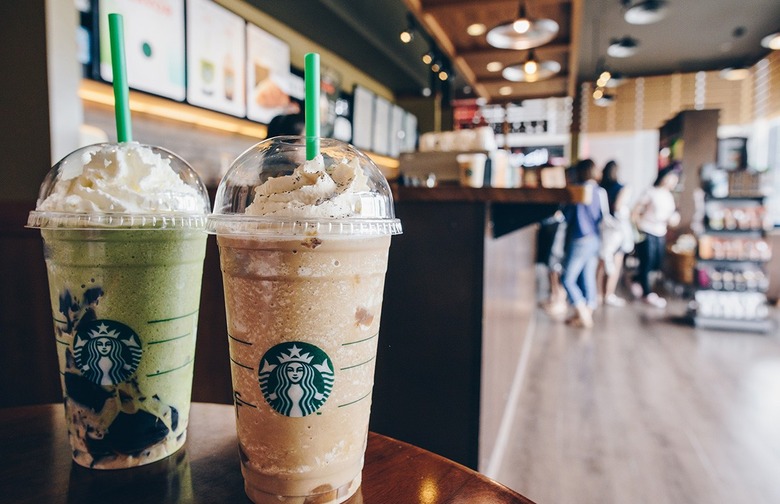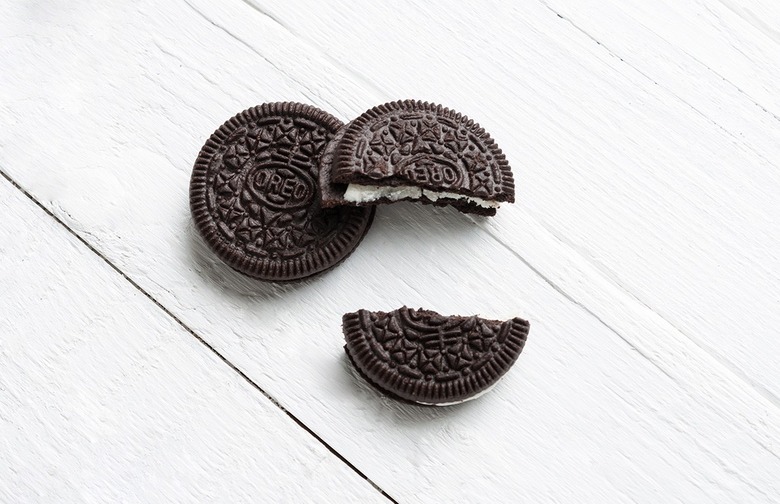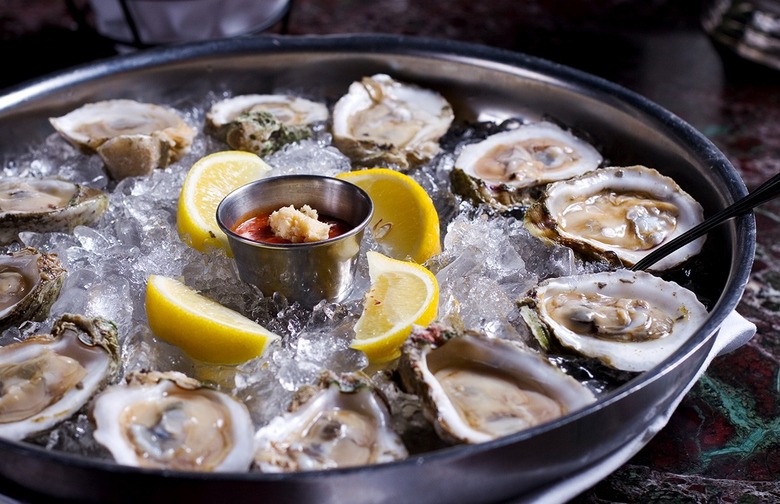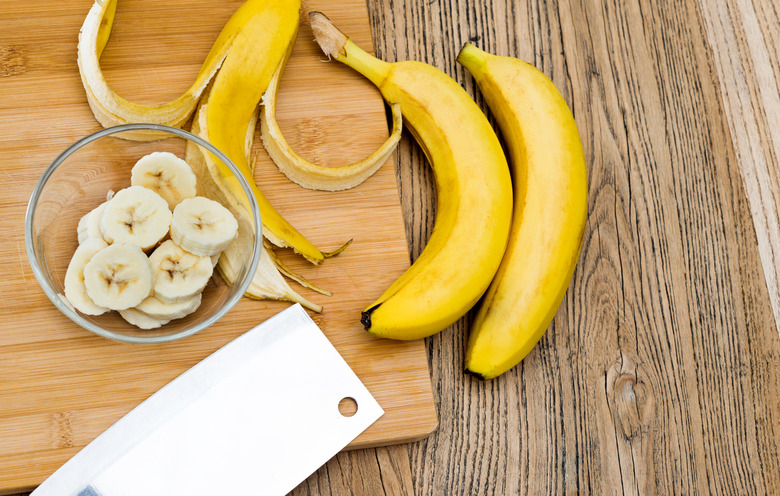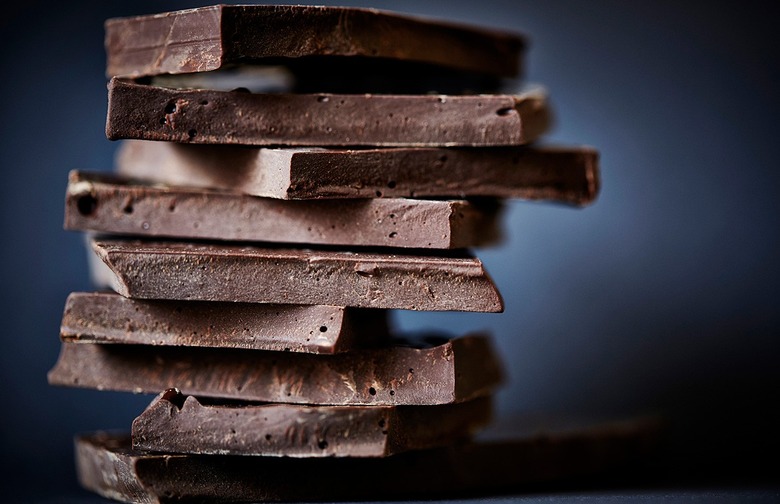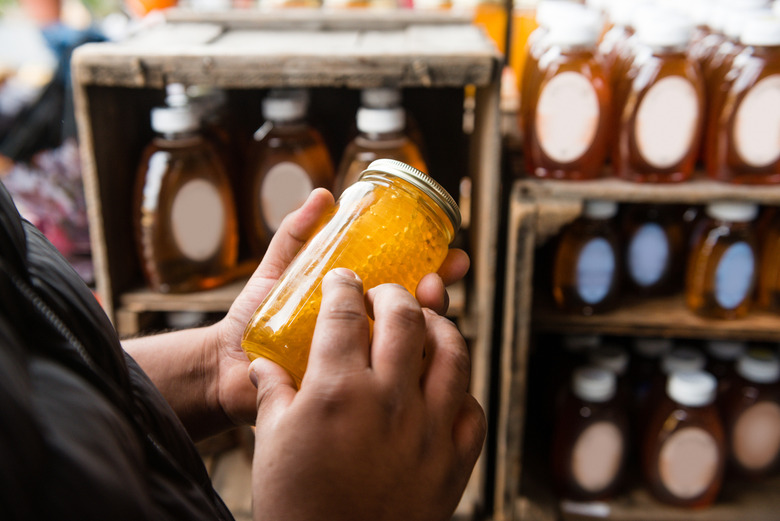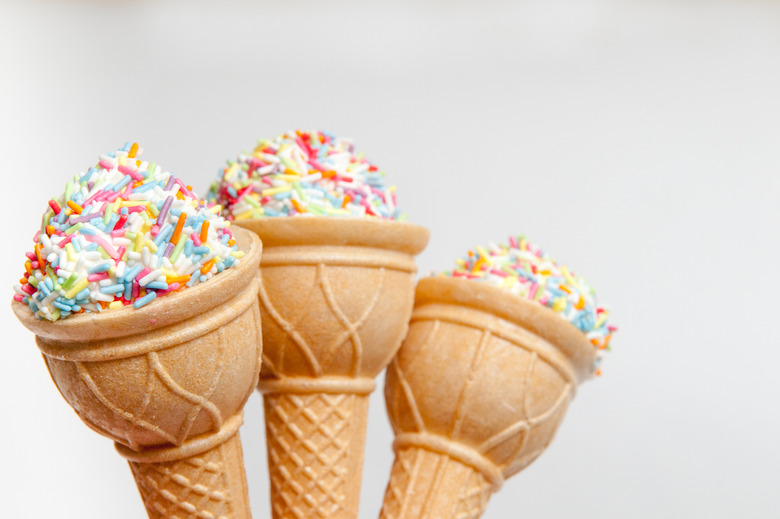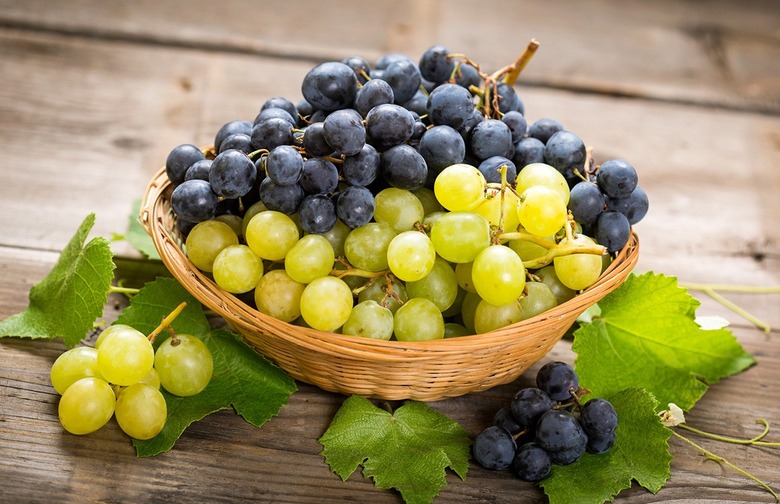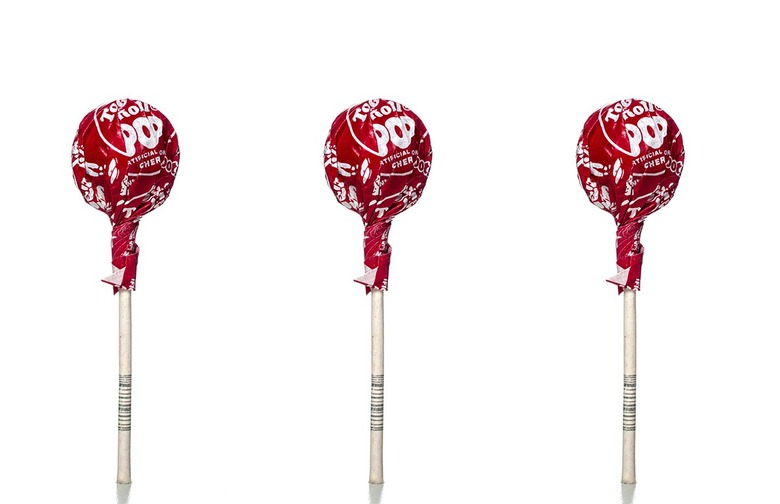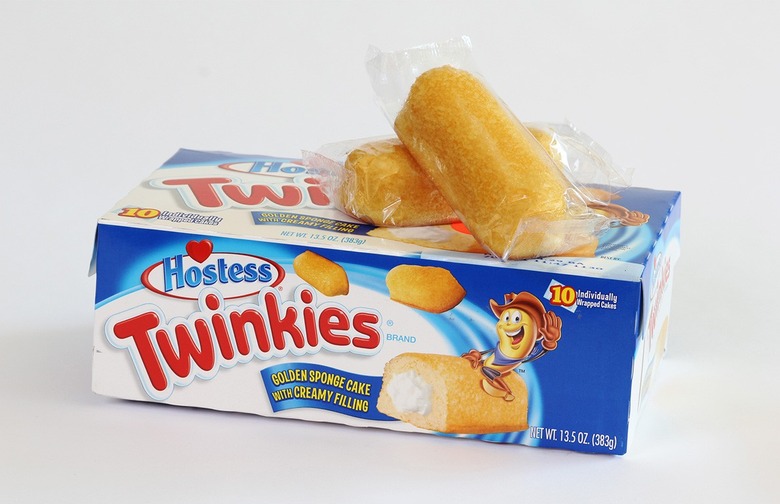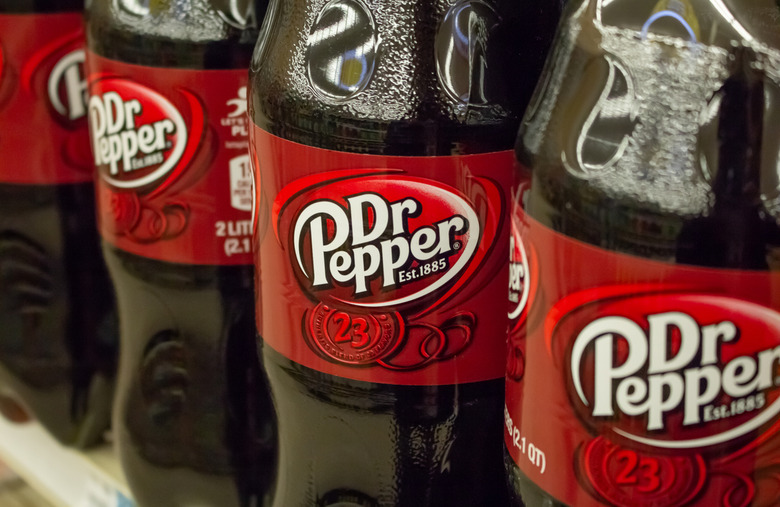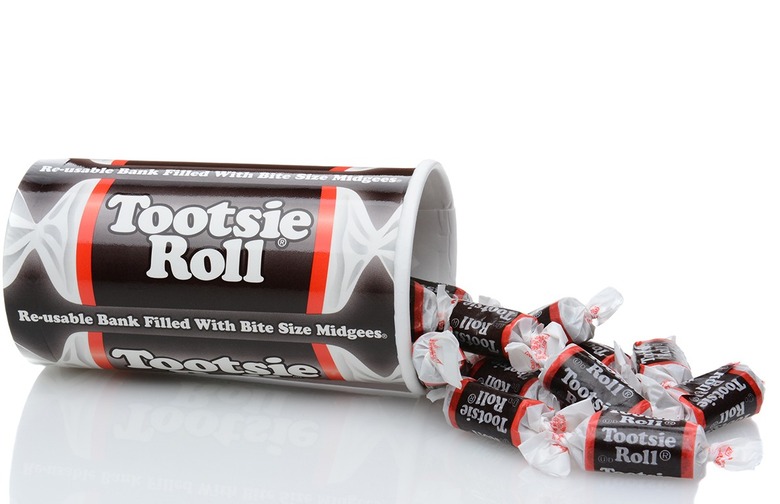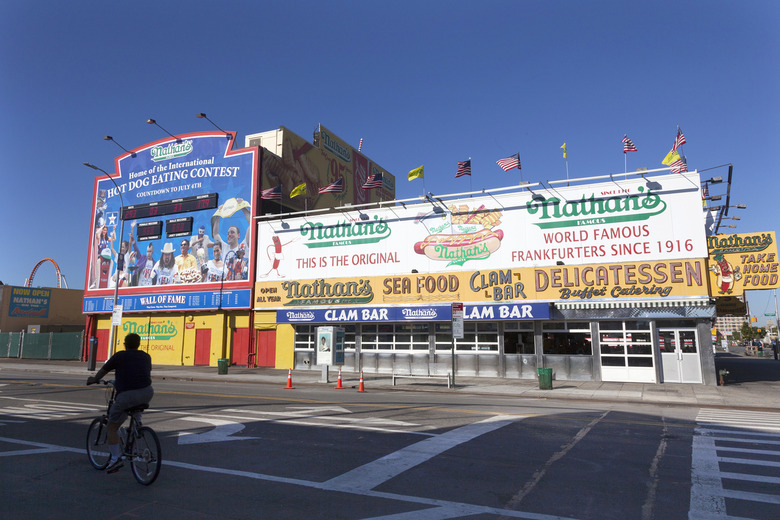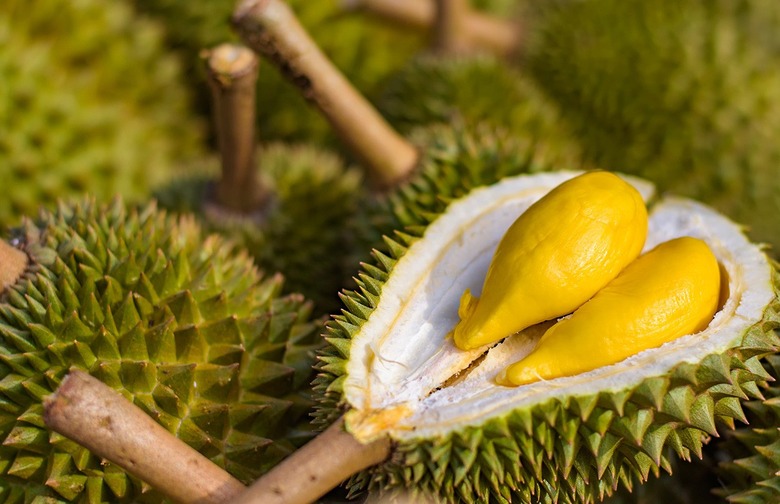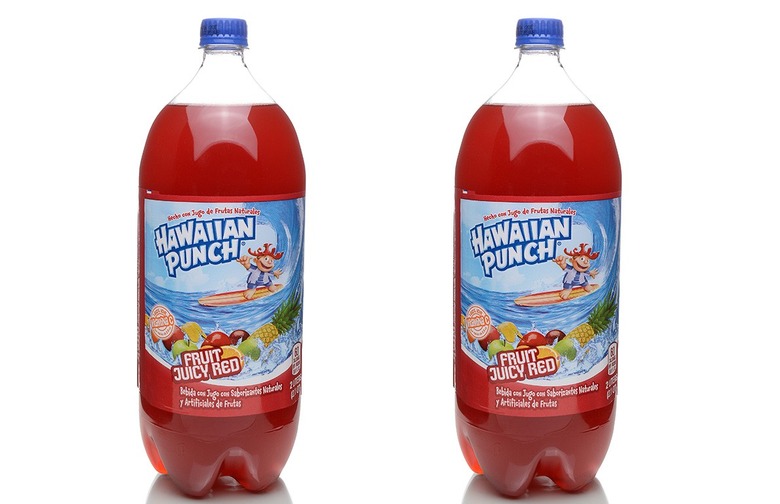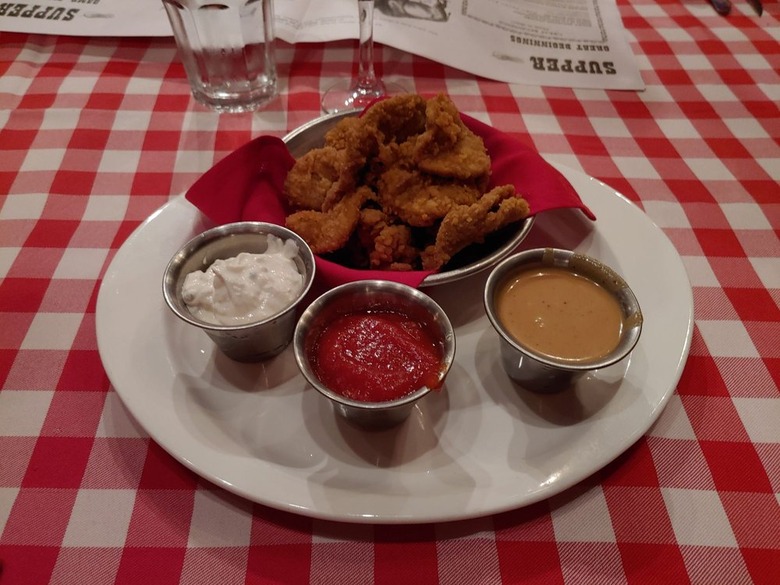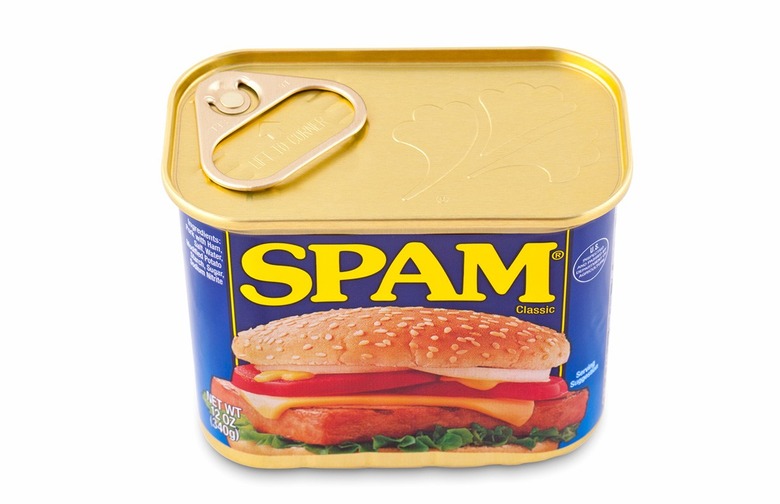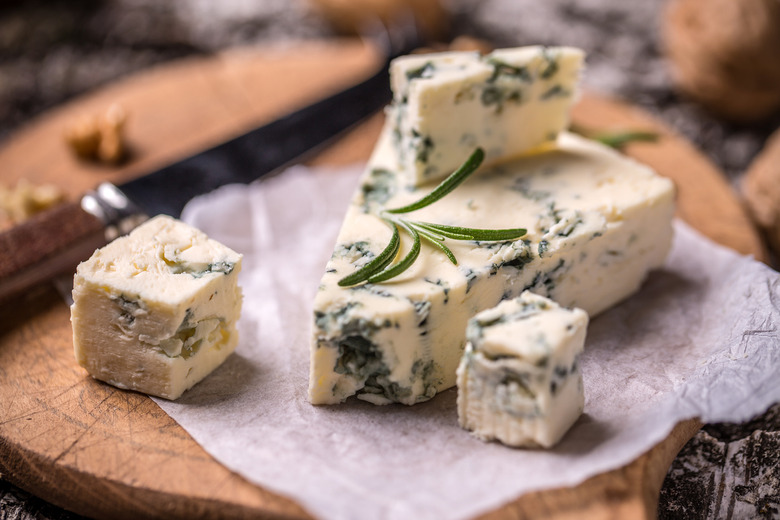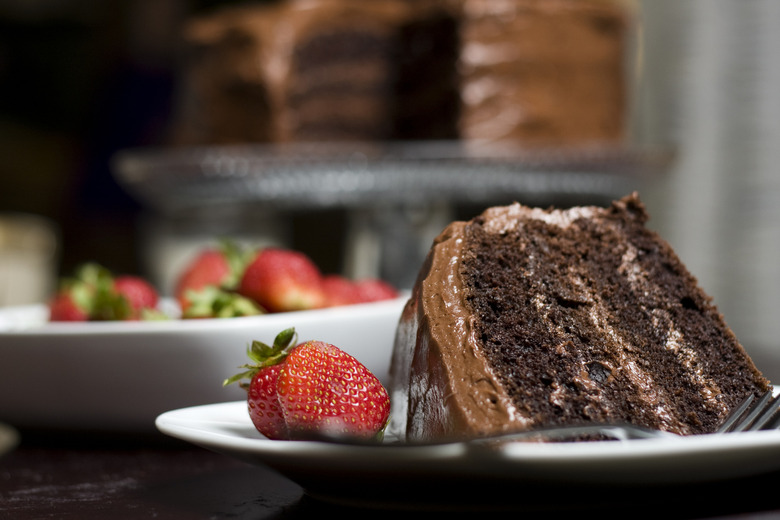The Official State Dish Of Texas And 35 Other Fun Food Facts
From why Rice Krispies snap, crackle and pop, to foods that explode when microwaved, to the number of licks it takes to get to the center of a Tootsie Pop, here are 36 fun food facts you have no reason to know but will enjoy knowing anyway.
The state dish of Texas
One of the highest accolades a food can get is being named a state food. State legislators must go through a rigorous legal process to honor an official icon of their state. Chili is a staple of the Lonestar State, so it's no surprise that its official state dish is Texas-style chili. Other states have some more surprising official state foods. For example, watermelon is the official state vegetable, yes vegetable, of Oklahoma.
Why Rice Krispies ‘snap, crackle and pop’
Ever since Rice Krispies hit store shelves in 1928, breakfast cereal lovers have often wondered what makes the puffed rice cereal "snap, crackle and pop." The iconic sound comes from the tiny air pockets in each grain. The walls of the air pockets break when the cereal begins to absorb milk. The result is that magical cereal symphony, which ceases once the cereal becomes soggy.
‘Coca-Cola’ is a universally understood term
There are plenty of fun facts about Coca-Cola, including that it has its own museum and is sold in more than 200 countries around the world. But this soda is so ubiquitous that "Coca-Cola" is the second-most widely understood term in the world after "OK." This might make Coca-Cola even more famous than McDonald's, whose Golden Arches are more recognizable around the world than the Christian symbol of the cross.
Cheetos orange cheese ‘dust’ has a name
Many people don't know that Cheetos' signature orange cheese "dust" that gets left behind on your fingers actually has a name. That powdery substance is called "cheetle." Frito-Lay officially trademarked the term in 2005.
Frappuccinos can be customized more than 36,000 ways
The first Starbucks opened in Seattle's Pike Place Market in 1971, but it wasn't until 1995 when the Frappuccino blended beverage debuted. The Frappuccino can be customized more than 36,000 ways. Some are straightforward like skipping the whipped cream or adding extra pumps of syrup, while more custom Frappuccinos are complex creations off of Starbucks' secret menu.
Oreo is the world’s most popular cookie
There are 40 billion Oreo cookies made each year. If you stacked them all together, the cookies would encircle the earth five times. The ubiquitous chocolate sandwich cookie with white creme filling is the world's most popular cookie and sold in 100 countries around the world. About 50% of Oreo eaters prefer to twist the cookies apart before eating them. And women are more likely to twist their Oreos apart than men.
Raw oysters are still alive when you eat them
Oysters are still alive when they are shucked. It's ultimately separating the meat from the shell at your favorite seafood shack that kills an oyster, which happens right before you pop it in your mouth. Restaurants are diligent about sourcing, shucking and serving oysters, and "bad oysters" are quite uncommon compared to other foods that carry foodborne illnesses such as salmonella.
Banana peels are useful
Bananas are chock full of beneficial ingredients too useful to throw away, so repurpose the peels. Rub them against your teeth for two minutes for an impromptu whitening or brew them into tea. The peel's potassium also serves as a natural cleaner and polish for leather or metal.
The Aztecs used chocolate as currency
Elites in the Aztec empire used ground cocoa beans to make hot or cold chocolate drinks. "The drink is the healthiest thing," wrote one Spanish conqueror in 1556. While dark chocolate can be a healthy snack, to the Aztecs it was more. Cacao beans were also used as a currency and a tax. According to a list of commodity prices from 1545, one ripe avocado cost a single cacao bean, as did a large tomato. A turkey egg would set you back three cacao beans.
Some foods have no expiration dates
It can be tough to tell what's still good in your fridge. While some grocery items have surprisingly long shelf lives, others have zero expiration dates at all. Archaeologists have uncovered unspoiled honey while excavating royal Egyptian tombs. One study found that after 30 years of storage, retail-packaged pinto beans were found to still be "acceptable for use in an emergency situation." Under the right conditions, sugar, pure vanilla extract, salt and other foods have no expiration date.
Sprinkles are made of wax
Yes, you or your favorite cupcake spot have likely topped perfectly baked cupcakes with wax. Commercially mass-produced sprinkles typically contain carnauba wax, a vegetable wax commonly used as a food polish or hardening gel.
Grapes explode in the microwave
Microwaves are for popcorn, not grapes. Place a grape, almost entirely split down the middle, in a microwave, heat it and watch it flame. In 2019, much to the internet's excitement, a team of physicists found the reason for the sparks. Using thermal imagery, the team determined the fire was brought on by microwaves trapped in the grape. Twelve microwaves were hurt in the making of the study.
How many licks does it take to get to the center of a Tootsie Roll Pop?
While you likely lost count after five, academic debate rages on over how many licks it takes to get to the center of one of America's favorite Halloween candies. A machine modeled after the human tongue, developed by engineering students at Purdue University, took 364 licks. Meanwhile, a group of 20 human volunteers at Purdue only required, on average, 252 licks. At the University of Michigan, another engineering student's machine took 411 licks, and mighty middle schoolers at Swarthmore School reported, on average, just 144 human licks. It truly seems the world may never know.
Twinkies are named after a billboard
Bakery manager Jimmy Dewar invented Twinkies in 1930. At the time, the golden sponge cakes filled with cream were sold two for a nickel. Dewar came up with the name Twinkies after he saw a billboard for "Twinkle Toe Shoes." Today, half a billion Twinkies are made every year.
Dr Pepper was invented by a pharmacist
In 1885, while working as a pharmacist in Waco, Texas, Charles Alderton created a new drink — a unique blend of flavors. The owner of the drugstore were Alderton worked, Wade Morrison, gave the new drink its name. According to legend, Morrison named the drink "Dr. Pepper" after the father of a girl he once loved. Now you can use Alderton's concoction as a meat marinade.
Tootsie Rolls get their name from a candy maker’s daughter
Tootsie Roll Industries produces 64 million Tootsie Rolls per day. Austrian immigrant Leo Hirschfield first invented the treat in 1896 in New York City. He named the hand-rolled candy "Tootsie," his then five-year-old daughter Clara's nickname, and sold the candy for a penny. This tidbit is only one surprising fact about your favorite candy brands.
Hot dog eating is a professional sport
Nathan's Famous Hot Dog Eating Contest champion Joey Chestnut holds the record for most hot dogs eaten in 10 minutes at 74 hot dogs and buns. Chestnut broke his own 73 hot dog record in 2018 at the annual Fourth of July contest on Coney Island. Before each match, Chestnut fasts for up to two or three days.
Having durian in your hotel room can lead to fines
Several hotels across southeast Asia fine customers for bringing this forbidden fruit into their establishments. The pale green and yellow, oblong, spiky fruit is infamous for its pungent odor. Even if eaten long before or sitting uncut, the stench lingers. A 2012 study traced the fruit's smell to 44 odor-active compounds. In 2018, an Indonesian flight carrying two tons of durian was grounded after passengers refused to board. Not to be outdone, the U.S. has its own list of wacky banned items.
Hawaiian Punch was originally an ice cream syrup
In 1934 in a converted garage in Fullerton, California, A.W. Leo, Tom Yates and Ralph Harruson used Hawaiian ingredients to craft a new tropical-tasting syrup. The men sold the concoction alongside their other ice cream toppings under the name "Leo's Hawaiian Punch." The company was purchased and renamed by Reuben P. Hughes in 1946. By that time, customers had already discovered that, when mixed with water, Hawaiian Punch made an incredible drink. Hughes gave into the demand and introduced quart-sized bottles in 1950.
Rocky Mountain oysters aren’t oysters
Don't let the name fool you. Rocky Mountain oysters may sound like seafood, but Colorado's most iconic dish is actually sliced, breaded and fried calf testicles. This sly dish even has its own unofficial holiday. Celebrated in Colorado on Oct. 5, Rocky Mountain Oysters Day was invented by a Denver Post journalist and added to a calendar of official and unofficial food holidays.
Most wasabi you’re eating is fake
Real wasabi is costly and its cultivation is labor-intensive. The plant's flavor is similarly temperamental, losing its kick minutes after being grated. For these reasons, you have likely never tried the real deal. What wasabi are you eating? Well, unless you're dining at an ultra-luxe restaurant, chances are you are consuming a mixture of horseradish, mustard and food coloring.
No one knows what SPAM stands for
Hormel Foods introduced the world to the SPAM can in 1937. That same year, Ken Daigneau, the brother of a Hormel Foods executive, won a contest and $100 for naming the six-ingredient wonder SPAM. Throughout World War II, more than 100 million pounds of SPAM was shipped to allied troops. By the time those troops returned home, the lunch meat had become a cult favorite. For over 80 years, many have speculated what the four letters mean. Through all this, the SPAM brand has stayed mum.
Betty Crocker wasn’t a real person
Whether you prefer baking a cake from scratch or from the box, you undoubtedly know Betty. After receiving thousands of baking queries from consumers in 1921, the flour-milling Washburn Crosby Company began crafting personalized responses to each letter. Every response from the company was signed by one Betty Crocker. Betty, chosen for its kind sound, and Crocker, the surname of a recently retired company director. By the '40s, nine out of 10 American households knew the name Betty Crocker.
The “m” stamp on M&M’s was added to prevent imitators
M&M's plain chocolate candies were introduced to the U.S. in 1941 and soon became the decade's most popular Halloween candy. By 1950, several imitation products flooded the candy-coated chocolate market. M&M's solution — stamp a black "m" onto each candy. The brand adopted the slogan: "Look for the m on every piece." Four years later, just as the peanut M&M's debuted, the company began printing the "m" in its now signature white hue.
Cadbury Creme Eggs aren’t filled with cream
Surprisingly, Cadbury started as a grocery store not a chocolate shop. In 1875, the store-turned-manufacturer began producing chocolate Easter eggs on a commercial scale. The earliest Cadbury eggs were made of smooth dark chocolate and filled with "dragees," small candy-coated chocolate pieces. Nearly a century later, the Cadbury Creme Egg debuted. With the help of a memorable ad campaign, the Cadbury Creme Egg became an instant creamless classic. Yes, creamless. The eggs are made in two parts quickly closed together. Both milk chocolate egg shell halves are filled with white creme fondant. Then, one half is given an extra helping of yellow fondant to simulate the yolk.
Some of your favorite fruits are actually roses
There are 300,000 species of flowering plants. The rose family, made up of 2,500 species, is one of the largest of the flowering plant families. Apricots, apples, cherries, peaches and plums are all rose family members. While these sorts of roses are obviously edible, there other more surprising edible flowers waiting to be enjoyed.
It’s legal to eat roadkill in many US states
As of January 1, 2019, salvaging deer and elk struck by vehicles in Oregon was legalized, albeit with some key regulations. Among the regulations are restrictions on salvaging protected species and returning antlers and animal heads to area offices. Over two dozen states have passed similar legislation. If all this makes you squirm, consider sticking to possum pie — Arkansas's completely possum-less most iconic pie.
There’s a reason airplane food tastes bad
It's not the food, it's you. Although you may feel at home zoned into an in-flight film, your taste buds know the difference between 30,000 feet in the air and your dining table. The humidity, low air pressure and noise in the plane cabin directly impact your sense of taste and smell. Stick with fruity wines, stay away from water, and keep these other crazy airplane facts in mind.
Crown Royal was actually made for royalty
In 1939, King George VI and Queen Elizabeth became the first reigning British monarchs to visit Canada. A Canadian spirits entrepreneur worked extensively to craft a whisky suitable for the royal pair. He tested over 600 blends before landing on the final mix of 50 whiskies. He poured the blend into a glass decanter, placed it in a gold-stitched purple bag and presented the gift to the King. Ten cases were loaded onto the monarch's train. Word soon spread of the regal whiskey. The drink has since become the top-selling Canadian whiskey and one of America's favorite booze brands.
There’s such a thing as moose cheese
One of the world's most expensive cheeses, moose cheese is made from, you guessed it, moose's milk. With a creamy and smooth texture, moose cheese originates from Sweden. Add this to the list of international cheese you have got to try.
French fries have presidential approval
When Thomas Jefferson returned to America from France, he brought with him a recipe for "pommes de terre frites a cru en petites tranches," roughly translated to "deep-fried potatoes in small cuttings." Though round in shape, they had all the makings of a french fry. Later, in 1824, his relative Mary Randolph included a similar recipe for fried potatoes in her famous cookbook "The Virginia House-Wife." That is not all there is to know about french fries; in fact, they may not even be entirely french.
Many foreign-named dishes were invented in America
Cuban sandwiches, English muffins, French dressing and German chocolate cake. Despite the deceiving names, these surprising foods were all invented in the USA.
Fanta was born out of World War II
In 1939, Coca-Cola was selling better in Germany than anywhere else in the world, besides the U.S. As World War II raged on, it became impossible to import the necessary ingredients to make Coke. So, the corporation's head of local operations in Germany came up with a new soda solution, mixing whey, apple fibre and seasonal fruits to create a sort of ginger ale. The soda was named Fanta, after the German word "fantasie." Fanta's not the only soda brand with a surprising past.
The beer company actually founded the Guinness Book of World Records
An argument over the fastest game bird in Europe inspired the creation of the authority on world records. Thinking back to the time he and a friend bickered over the birds, Sir Hugh Beaver, managing director of the Guinness Brewery, had the idea for a Guinness promotion based on the idea of settling similar petty pub fights. He hired a couple researchers and set up shop in an old converted gymnasium in 1954.
Coffee inspired the invention of the webcam
In 1991, a group of researchers at the University of Cambridge in England were busy at work in a computer lab known on campus as the Trojan Room. The 15 academics shared a single coffee machine. When brewed, the coffee did not last long. To have eyes on how much coffee was available at all times, the team rigged a camera that captured three grayscale images of the coffee machine every minute. The camera streamed live on the web until August 2001. Even if you're not a coffee-starved English academic, get your caffeine fix with the best coffees in America.
Pizza has been delivered to space
In 2001, a six-inch Pizza Hut pizza was vacuum-sealed and sent via Russian rocket to the International Space Station. The pizza was heated in a space oven and enjoyed by Russian cosmonaut Yuri Usachov. Extra salt and spices were added to the recipe to compensate for Usachov's dulled taste buds, a common side-effect of spending a long time out of this world. Despite the extraordinary effort, the flavor likely did not compare to the 101 best pizzas in America.
More From The Daily Meal:
The Absolute Best Thing to Eat in Every State
25 Things You Didn't Know About Your Favorite Fast Food Chains
Regional Fast Food Chains We Wish Were National
